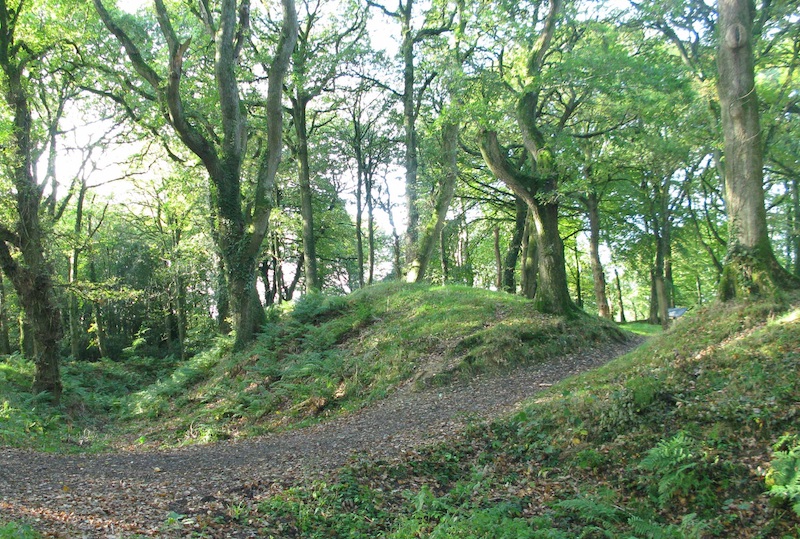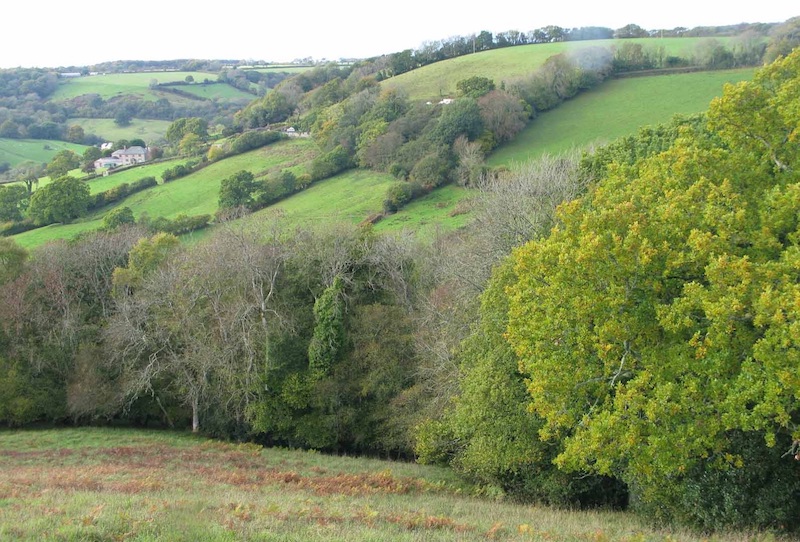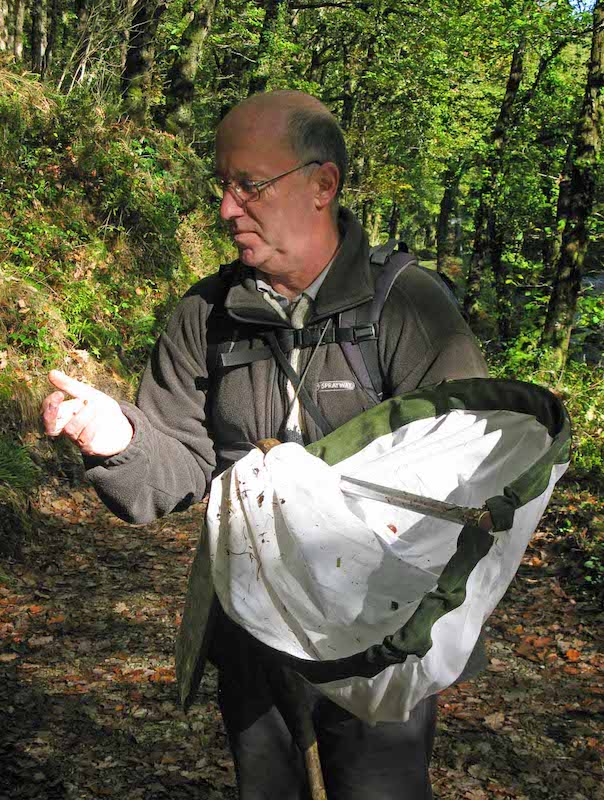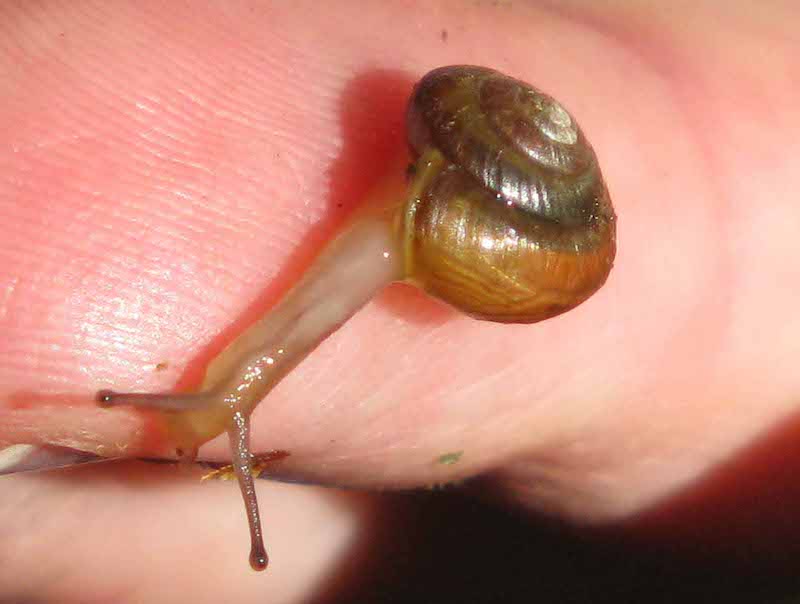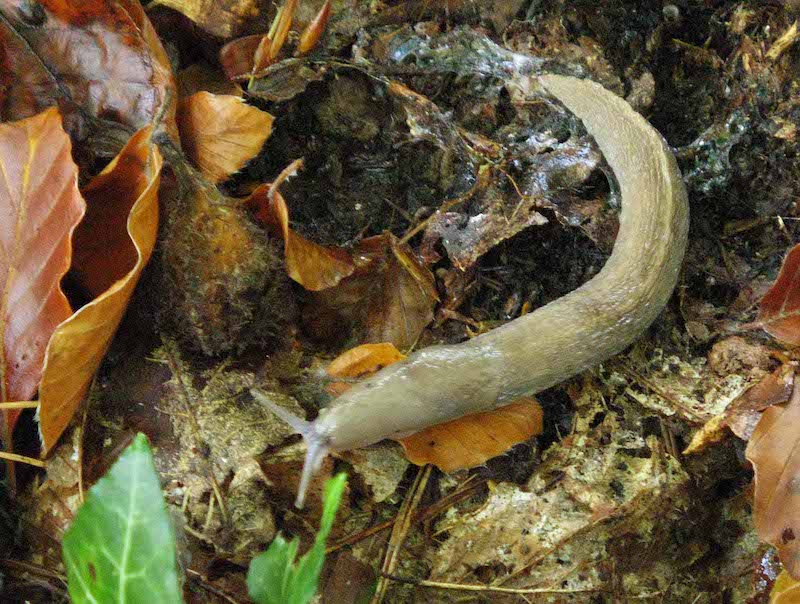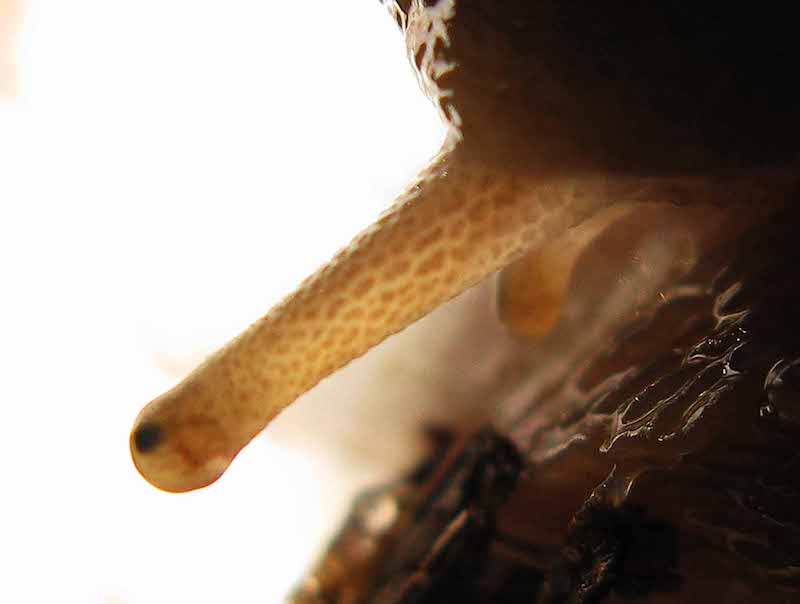|
Malacolimax tenellus, the Slender Slug, has only ever been found in the South West in the Sidmouth area of East Devon. The next localities up-country are the New Forest and the Cotswolds, so the local Devon population appears to be very isolated from the main British range. In his British Snails, A. E. Ellis (1926) notes ‘Blackberry Castle near Branscombe in Devon’ as one of the few known localities for this elusive slug. Since then it has only been found in Roncombe Goyle, Sidmouth, as a result of the extensive Devon recording project led by Dave Bolton and Michel Hughes during 1989-95 (M. Hughes, pers. comm.). The aim of this field meeting, which took place over two days (23rd and 24th October 2010), was therefore to revisit both of the known sites and to explore further afield. |
|
|||||||||||||||||||||||||||||||||||||||||||||||||||||||||||||||||||||||||||||||||||||||||||||||
|
Blackbury Camp area The first stop was Blackbury Camp (SY1892), Southleigh, which is an Iron Age hill fort now owned by English Heritage (figure 1). The earthwork is situated on an east–west ridge at a height of about 185 m and is covered by mature beech and oak trees. To the north lies the ancient woodland site of Wiscombe Wood (now conifer plantations) and along the south side is an area of former wood pasture called Castle Down. Exactly where the slug was originally found is unclear. We started with the wooded earthworks. Despite heavy showers, the ground was actually quite dry and there was little sign of fruiting fungi. After an hour or so of searching only a few widespread species had been found so we followed a public bridleway into the western section of Castle Down. Grazing has long ago ceased here and the area is now dominated by closed canopy woodland of open-grown oak standards with much birch and holly in-fill. A Limax cinereoniger was quickly found in a cavity under loose bark on a hanging dead oak branch, and another was found further into the wood beneath a decaying log on the ground. The ground layer was also very dry here and again few fruiting fungi could be found other than on decaying wood, of which there was plenty. L. cinereoniger is often present at M. tenellus sites so perhaps this is the original locality. If so it appears to still be suitable. Wiscombe Wood has no public access and so was not entered. |
figure 1: Blackbury Camp general view. (Photo: Keith Alexander) |
|||||||||||||||||||||||||||||||||||||||||||||||||||||||||||||||||||||||||||||||||||||||||||||||
|
Roncombe Goyle After lunch the group moved to Roncombe Goyle (SY1694), courtesy of the owner, Mr E Smith of North Mincombe Farm. This is a very rich wooded stream gully which was visited by the Society in the spring last year to successfully confirm the presence of Phenacolimax major. While the 2009 visit concentrated on the stream-sides deep in the Goyle, the M. tenellus search concentrated on the southern wooded valley sides. Interestingly this appears also to be a former wood pasture area, with scattered open-grown oak trees – some pollards – with in-fill of dense holly along the drier areas together with patches of wet alder woodland associated with wet seepage areas. The flinty slopes were again very dry and with very few fungi visible. A single juvenile Zenobiella subrufescens from one of the wet seepage areas was the only highlight. After some time scrambling through the holly thickets to no avail, continued heavy showers convinced us that a strategic retreat was the best course of action. |
figure 2: View of Roncombe Goyle, a wooded stream valley. (Photo: Keith Alexander) |
|||||||||||||||||||||||||||||||||||||||||||||||||||||||||||||||||||||||||||||||||||||||||||||||
|
Holne Chase, Dartmoor Sunday proved to be a much nicer day, with warm autumnal sunshine throughout. After gathering near Buckland Bridge, the group moved to Chase Wood (SX7271), Holne, where permission had been given by the owner, Richard Simpson, for the leader to take a party into this famous area of ancient woodland. The River Dart here cuts through a steep-sided valley extensively clothed in ancient oak woodland. As one of Devon’s largest areas of ancient woodland it was thought a feasible site for M. tenellus, albeit speculative, given a lack of any past records from the Dartmoor area. Having parked by the river bank at the base of the eastern slopes, the party explored northwards in the morning and southwards after lunch. The soils are mostly acid here but with more base-rich conditions locally, associated with wet seepages – fine for slugs but poor for snails. After two hours of exploration the list was horribly short but eventually both Zenobiella subrufescens (figures 3 and 4) and Limax cinereoniger were found, but no M. tenellus. Arion silvaticus was also a useful record and Balea heydeni was found close by the vehicles at the end of the day. L. cinereoniger was found in two separate areas, a very typical black specimen in the northern area investigated and a remarkably pale one in the south. This pale specimen caused much discussion of the key identification features (figures 5 and 6). With so little coloration even the sole appeared completely whitish, with no hint of dark stripes along the sides. But the keel was typically long and the tentacles spotted with black, so it was definitely L. cinereoniger and not L. maximus. The slime was colourless but not sticky. Specimens like this are very useful at focusing the mind on the key features. The ‘jizz’ was very much L. cinereoniger, which was encouraging. The southern riverbanks were the best areas seen all weekend for fruiting fungi, although not impressive. Many of the toadstools had been well chewed by slugs but few of the slugs concerned could be found close by. The damage to the groups of Hydnum rufescens was especially frustrating as this fungus is very edible to humans as well as slugs! The full list for the weekend was only 18 species but these included 11 species of slug, so the slug theme was achieved even if the target species eluded us.
Acknowledgements I am grateful to Michel Hughes for information from the Devon invertebrate survey, and to Mr E Smith and Richard Simpson for permitting access to their private land. Norman Baldock of the Dartmoor National Park Authority advised on suitable sites for speculative surveys. Photos by Ron Boyce
|
figure 3: Keith Alexander, having found Z. subrufescens by sweep-netting in Holne Chase; the snail is on his finger. (Photo: Keith Alexander)
figure 4: Z. subrufescens on Keith’s finger. (Photo: Keith Alexander)
figure 5: Pale L. cinereoniger from Holne Chase (Photo: Keith Alexander)
figure 6: Close up of ocular tentacle of pale L. cinereoniger showing the characteristic dark spots. (Photo: Keith Alexander) |
Field meeting in south Devon in search of Malacolimax tenellus
Issue
27
Page
4

